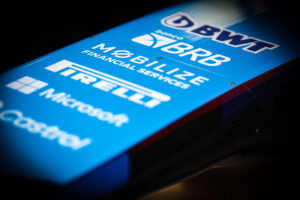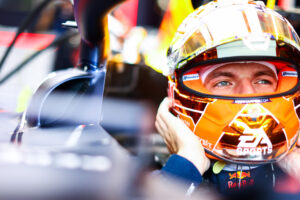The FIA and Formula 1 have announced the calendar for the 2025 FIA Formula One World Championship. It will be another 24-round season, with the Australian Grand Prix back as the F1 season.
The 2025 Formula One season and the Australian Grand Prix will return as host for the season opener. Melbourne has hosted the majority of season openers since 1996. However, for the past three years, Bahrain has held that spot.
🥁 Presenting… the 2025 FIA Formula One World Championship calendar!#F1 pic.twitter.com/qrBB52ncRd
— Formula 1 (@F1) April 12, 2024
Australia is a fan-favourite season opener, as many times it has delivered as a worthy curtain raiser. Here, we will look at some of the most memorable season-opening Australian Grand Prix in F1 history.
2003 – Coulthard’s last F1 win earned in a sea of chaos
The 2003 Australian Grand Prix was a worthy season-opener, with drama from the first to the last lap.
That season, there was a new qualifying format which required teams to set their times using the fuel they would carry for the start. This led to several drivers starting lower than expected. It was all smiles in the Ferrari garage as it was a front-row lockout for them, with Michael Schumacher in P1 and Rubens Barrichello in P2.
When it had rained heavily before the race on Sunday, it was obvious what was to come was an exciting Grand Prix. The track was not fully wet, so early pit stops for slicks were expected for those who would start on the wets. Toyota’s Olivier Panis, McLaren’s Kimi Räikkönen and Williams’ Juan Pablo Montoya made the gamble to start on the dry tyres, while the rest of the grid chose wet tyres.
Wet tyres and drying track
At the race start, Barrichello had jumped the start and later received a drive-through penalty. At the end of lap 1, Schumacher led with Barrichello close behind. The Ferrari’s had a healthy lead, as Montoya was 6 seconds behind in third. Panis who had started on dry tyres was struggling and was under pressure from those behind him.
However, with the track quickly drying up, those who started on the wets, including the two Ferraris began to struggle. With the track drying, the first retirement came as early as lap 5. Barrichello was due to go into the pits to serve his penalty. However, during his in-lap, the Brazilian lost traction at turn 5. On lap 7, rookie Ralph Firman also lost control at turn 5, however, he was on dry tyres. Firman’s accident required the safety car to come in.
Meanwhile, the two McLarens were having great recovery drives. Kimi Räikkönen who started from the pitlane was quickly making his way up the grid. His teammate David Coulthard meanwhile set the fastest lap of the race on dry tyres. Despite this, Ferrari chose not to respond immediately by Schumacher back to the pits. When they eventually did bring him to the pits just before the safety car was brought out, it was a slow pit stop due to issues with the rear left tyre, to the further dismay of Ferrari. Schumacher dropped to P8.
More retirements came on early in the race. On lap 7 rookie, Cristiano Da Matta spun off into the gravel at turn 3. On lap 15, to the disappointment of the Australian fans, home favourite Mark Webber’s Jaguar’s rear suspension broke just after the race restart. This only meant a second appearance of the safety car and a number of pit stops.
At the end of lap 19, the safety car returned to the pits. For the first time in his career, Räikkönen led a race at a restart behind a safety car. To add to the pressure, it was Michael Schumacher behind him. However, Räikkönen handled the pressure well, getting away from Schumacher, even after the two later pitted.
Last-minute drama
Räikkönen got a drive-through penalty for speeding in the pitlane, losing a few positions as a result. On lap 43, race leader Montoya went into the pits, allowing Schumacher to lead the race. However, the German driver had a damaged floor after driving too violently over a curb. Due to this, parts of the aerodynamic elements of the car broke off and became lodged underneath the car. In a race that was highly expected to be a Ferrari and Michael Schumacher victory, the chances were now looking slim.
Schumacher, who still had to make another pit stop, was therefore forced to do so on lap 46 after receiving a black-orange flag. On lap 47 of 58, the tables had completely turned. Montoya was leading the race, with Coulthard, Räikkönen and Schumacher behind him. Either of them – apart from Schumacher – could take the win for themselves. However, under pressure, Montoya spun after turn 1. He was able to get himself back into the race, but to his misfortune, Coulthard passed him for the lead.
Coulthard went on to win the 2003 Australian Grand Prix, his last-ever F1 race win. Montoya maintained P2, Räikkönen P3 and Michael Schumacher P4. For the first time since the 2001 Italian Grand Prix, Schumacher missed out on the podium. This ended Ferrari’s 53 consecutive podium finishes.
For most of the race, it was hard to predict who would win the race. Halfway through the race, it looked like the win could go to either Kimi Räikkönen or Michael Schumacher. But then towards the end, everything changed and suddenly Montoya and Coulthard were in the conversation too.
The 2003 Australian GP season opener was one to remember, with drama everywhere you looked. It is largely considered one of the best Australian GPs, and might just be the best season opener ever hosted at Melbourne.
Honourable mentions
Whilst the 2003 Australian GP season opener was a classic, there are a number of season openers hosted at Melbourne that are worth mentioning.
The 2009 Australian GP season opener is remembered for Brawn GP’s incredible F1 debut. In what was Brawn GP’s first season in the sport, Jenson Button and teammate Rubens Barichello gave the team a front-row lockout at qualifying and a 1-2 finish at the race. Brawn GP’s performance at the first race of the season proved not to be a one-off situation, as they clinched the Drivers’ Championship with Jenson Button, and the Constructors’ Championship by the end of the season.
Quite eventful was the 1999 Australian GP. Both Stewart cars had oil leaks and fires, causing a delayed start and a reduction of laps. McLaren’s Mika Häkkinen and David Coulthard were dominant in all sessions that weekend but faced issues before the race began. Häkkinen who had started in a spare car led at the second start retired after 21 laps due to throttle problems. Coulthard retired with transmission issues after 11 laps. Michael Schumacher suffered a puncture and had to replace his damaged front wing. Meanwhile, Eddie Irvine took the lead for Ferrari, holding off challenges from Frentzen and Ralf Schumacher. Irvine went on to win the race, and Michael Schumacher finished the race in P8, no one behind him as the rest of the grid had retired. There were a total of 12 retirements at the start, and 1 DNS coming from Stewart-Ford’s Johnny Herbert.
Jacques Villeneuve is a large part of the reason the 1996 Australian GP is unforgettable. It was an all-Williams front row with Damon Hill and debutant Jacques Villeneuve set the stage. Villeneuve had made quite the impression by getting pole in his first-ever F1 qualifying appearance. In the first corner of the race, Hill lost momentum after being squeezed. As a result both Ferraris overtook him. A collision that was a result of a lot of drivers heavy braking at the first lap led to a race stoppage. After the restart, Williams continued to dominate, with Villeneuve leading Hill. Michael Schumacher held third but retired due to brake problems. Villeneuve was on track to win on his debut, however, towards the end of the race he slowed down due to an oil leak, allowing Hill to pass him. Williams finished the race with a 1-2.






